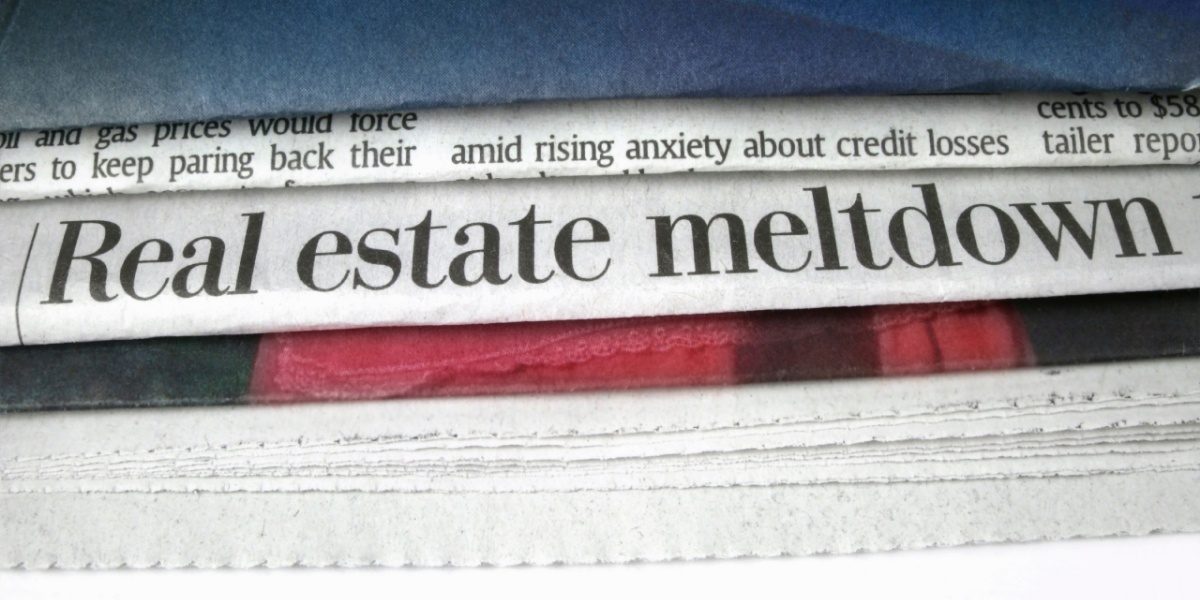The Real Cause of the 2008-09 Great Recession
Share
By Hillsdale College Online Courses October 12, 2015
Opinions abound as to the cause of the ’08-’09 recession. Blame has been laid on greedy bankers, exploitative lenders, and just plain animal spirits, according to Gary Wolfram, professor of economics. Wolfram cites the Austrian School of Economists’ business cycle theory, stating that the true cause was a boom and then a bust of the housing market, which was caused by homebuilders responding to a distorted price signal.
The following video is a clip from Hillsdale’s Online Course: “Economics 101: The Principles of Free Market Economics,” featuring Gary Wolfram, the William E. Simon Professor of Economics and Public Policy.
Transcript:
Gary Wolfram:
What was the cause of the great recession of 2008-2009? Some say greedy bankers, others exploitive mortgage lenders, and some just say plain animal spirits. It is clear that the trigger for the recession was the boom and later bust in the housing market. Mortgage-backed securities used as capital requirements created a link between the housing market and [the] financial industry. So what caused too many houses to be built across the country?
Lionel Robbins, a mid-twentieth-century British economist, asked of business cycles why large numbers of producers all got it wrong at the same time. Why did homebuilders make too many houses, not just in San Diego but all of California and Florida and Arizona? It's likely the answer is producers responding to a distorted price signal—in this case the interest rate.
The Federal Reserve began lowering its interest rates from 6.54 percent in late 2000 until it reached 1 percent in November 2003 and then held it there until June 2004. These low interest rates encouraged consumers to buy houses and producers to make houses. In addition to the Fed, Congress, with its amendments to the Community Reinvestment Act, pushed banks into lending to low-income borrowers who would not have normally qualified for a mortgage. HUD required Fannie Mae and Freddie Mac, two government-sponsored enterprises that dominate the mortgage market, to have 56 percent of their mortgages subprime by 2008. A relaxation of lending standards spread throughout the industry. People who couldn't really afford houses were given mortgages. Then in July 2004 the Fed began to increase interest rates, afraid of the onset of inflation.
By May 2006 the rising interest rates began to put a squeeze on housing prices, and they began to fall. As interest rates rose and housing prices fell, foreclosures began to occur, further depressing housing prices. Then mortgage-backed securities began to fall in value, reducing the capital of the financial institutions. Exacerbated by a 2007 requirement of the federal accounting standards board, these institutions used mark-to-market accounting to value their capital. This required investment banks to write down losses before they actually occurred, reducing their capital and creating a credit crunch and an eventual collapse of investment banks such as Lehman Brothers.
This analysis of the cause of the great recession is consistent with the business cycle theory of the Austrian School of Economists, including Ludwig von Mises and F.A. Hayek. If you'd like to know more about Austrian business cycle theory and its application to the great recession, watch Lecture 9 of the Econ 101 [Online Course from Hillsdale College].

